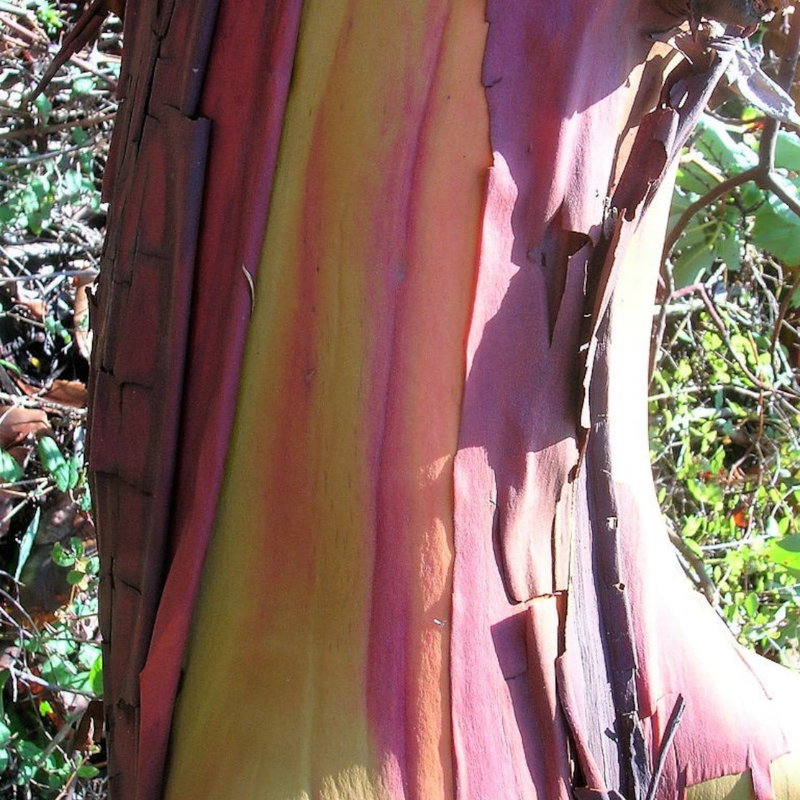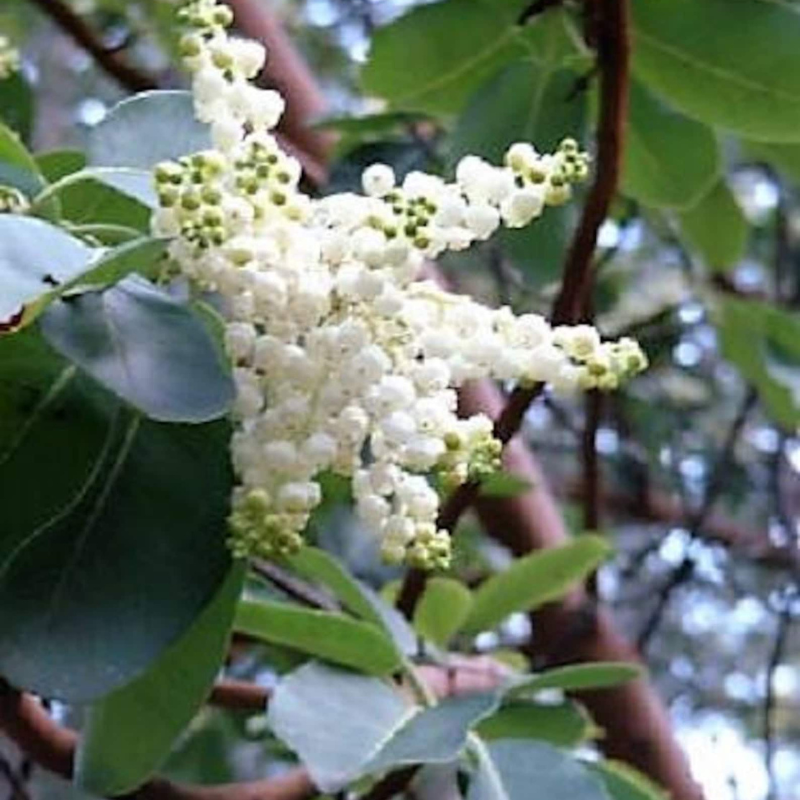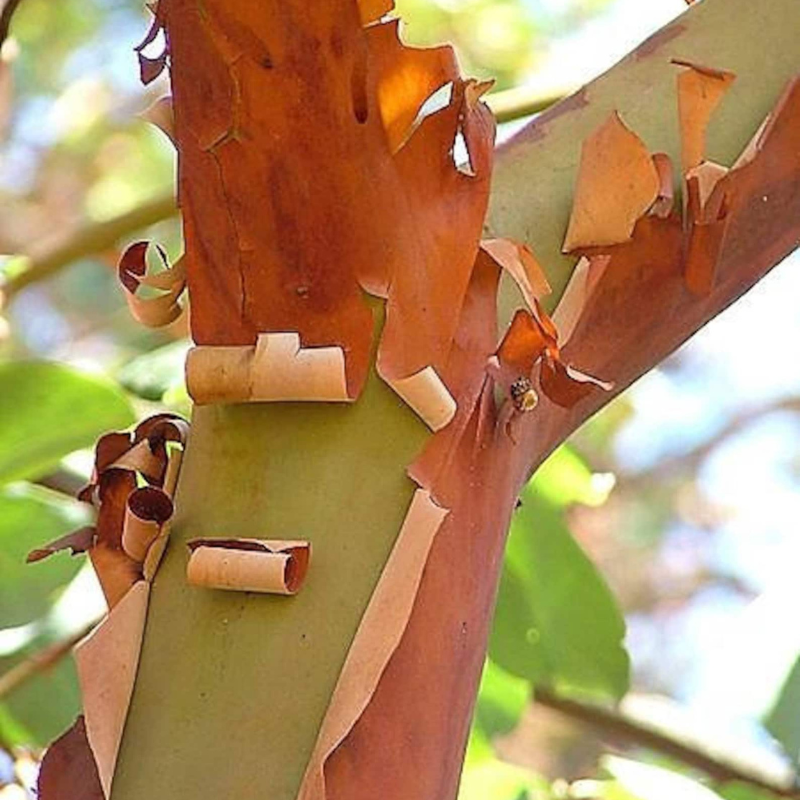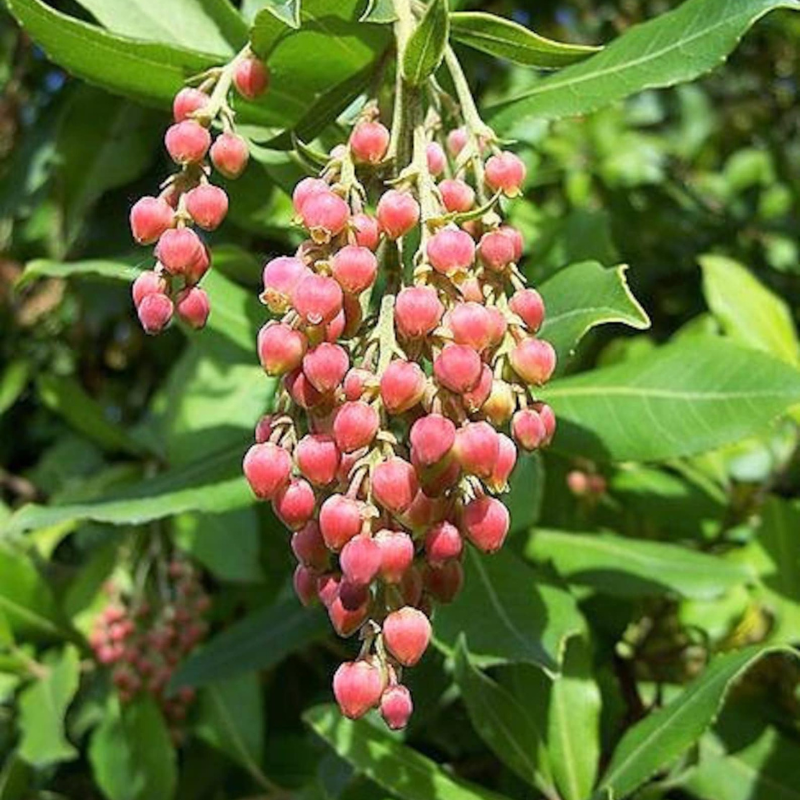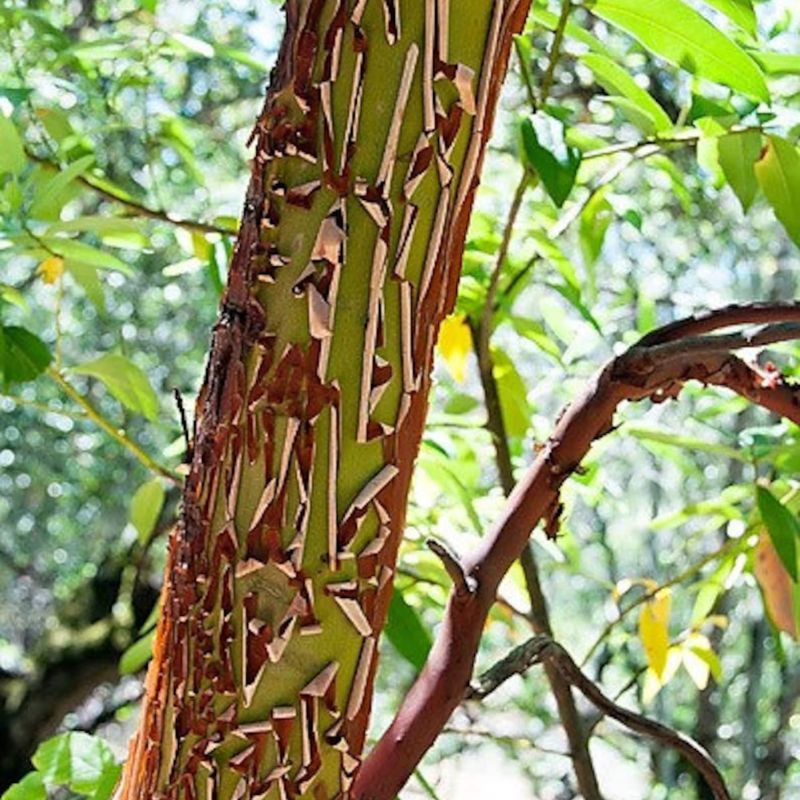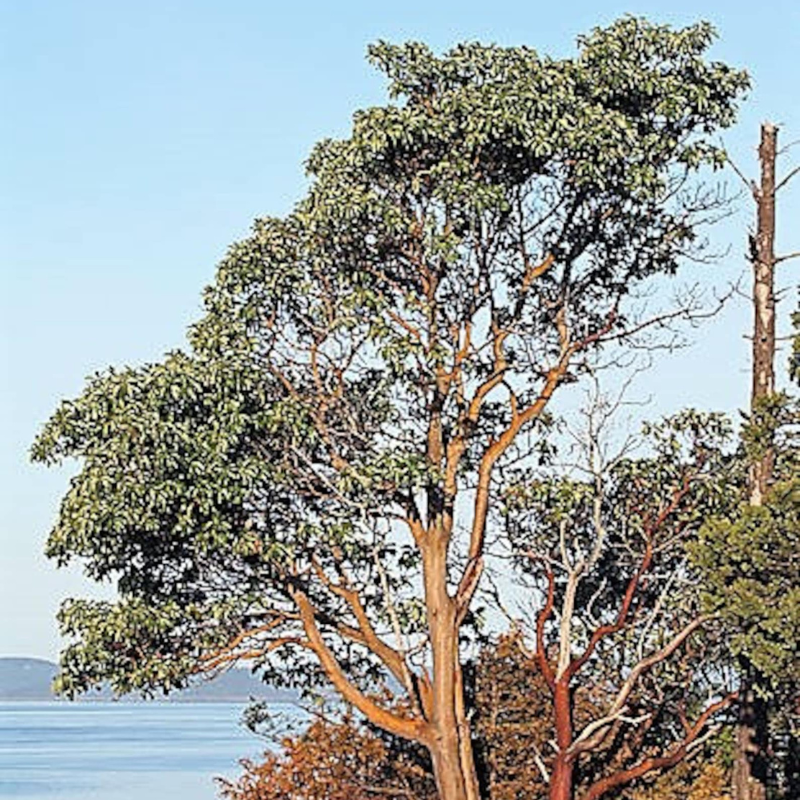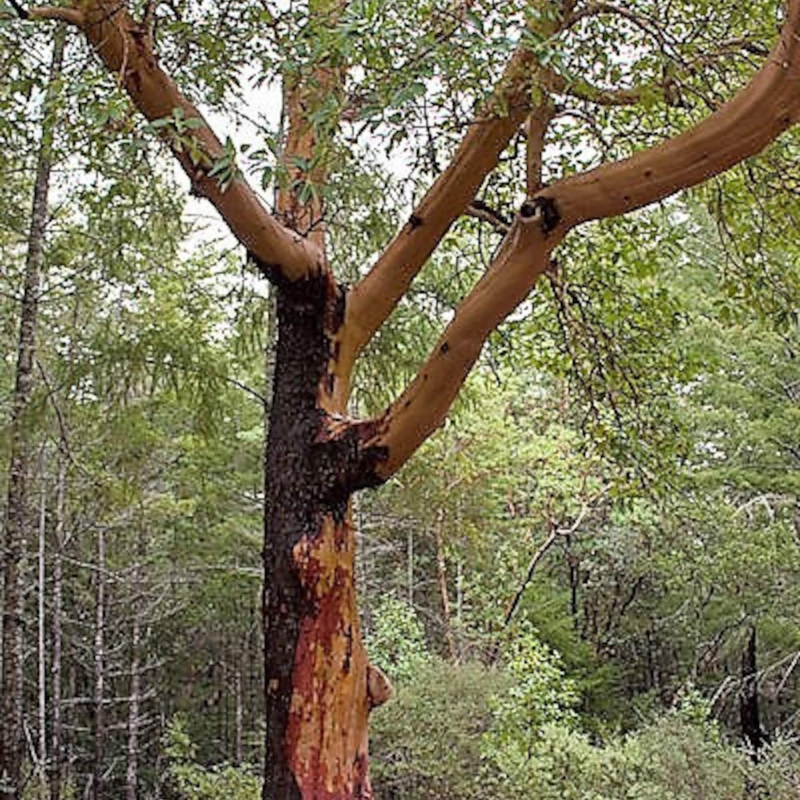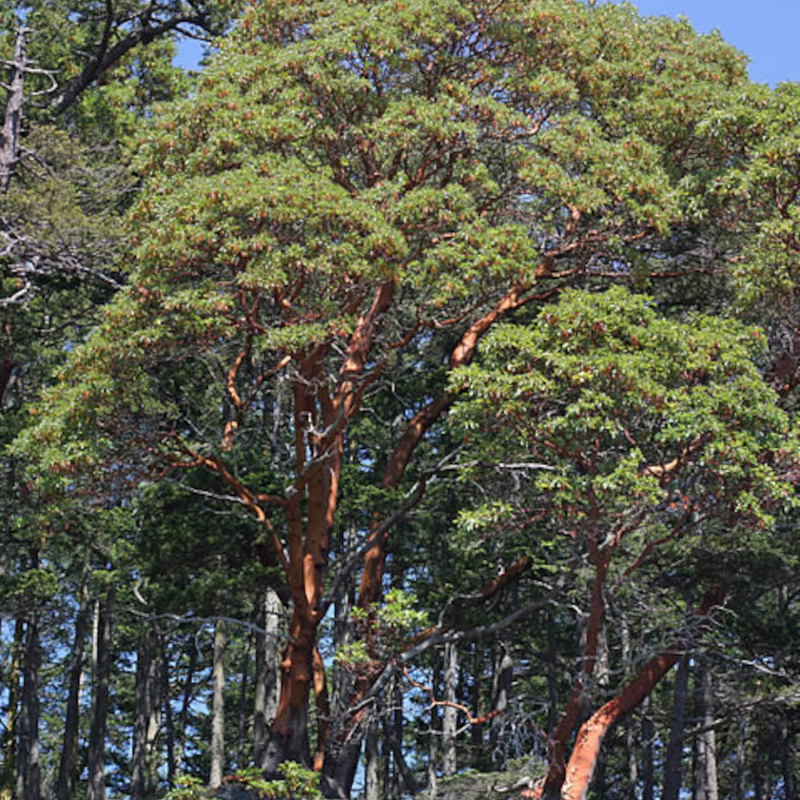- Historical context: The Pacific Madrone (Arbutus menziesii) is a tree native to the western coastal regions of North America. It has been known and utilized by indigenous peoples for centuries.
- Geographical origination: This tree is primarily found along the Pacific coast, from British Columbia in Canada down to California in the United States.
- Relevant cultural significance: The Pacific Madrone holds cultural significance for various Native American tribes, who have used its bark, leaves, and berries for medicinal purposes.
- Time period of discovery: The tree was first documented by European botanists in the late 18th century.
- Original habitat: The Pacific Madrone thrives in coastal forests, often on rocky, well-drained soils.
- Notable historical uses: Historically, the bark was used for making dyes and the berries were consumed both fresh and dried.
- Ideal temperature range: The Pacific Madrone prefers mild temperatures, typically between 50°F and 70°F (10°C to 21°C).
- Soil type: It thrives in well-drained, sandy or rocky soils with a slightly acidic to neutral pH.
- Sunlight requirements: Full sun to partial shade is ideal for the growth of the Pacific Madrone.
- Watering needs: Once established, the tree is drought-tolerant and requires minimal watering. Overwatering can be detrimental.
- Planting season: Seeds are best sown in the fall to take advantage of natural stratification over the winter.
- Germination time: Germination can take several months, often requiring a period of cold stratification to break dormancy.
- Growth cycle duration: The tree grows slowly, often taking several years to reach maturity.
- Common pests and diseases: Common issues include root rot, leaf spot, and canker diseases. Pests such as aphids and scale insects can also be problematic.
- Companion planting advice: Companion plants include other native species such as Douglas fir and Oregon grape.
- Common challenges and solutions: Challenges include susceptibility to root rot in poorly drained soils and sensitivity to pollution. Ensuring proper drainage and planting in a suitable environment can mitigate these issues.
- Nutritional values: The berries of the Pacific Madrone are rich in vitamins and antioxidants.
- Health benefits: Traditionally, the bark and leaves have been used for their astringent and anti-inflammatory properties.
- Culinary uses: The berries can be eaten fresh or dried and used in various culinary applications, including jams and jellies.
- Medicinal uses: The tree has been used in traditional medicine to treat ailments such as colds, sore throats, and gastrointestinal issues.
- Other unique advantages: The Pacific Madrone is valued for its ornamental beauty, with its striking red bark and evergreen leaves making it a popular choice for landscaping.
